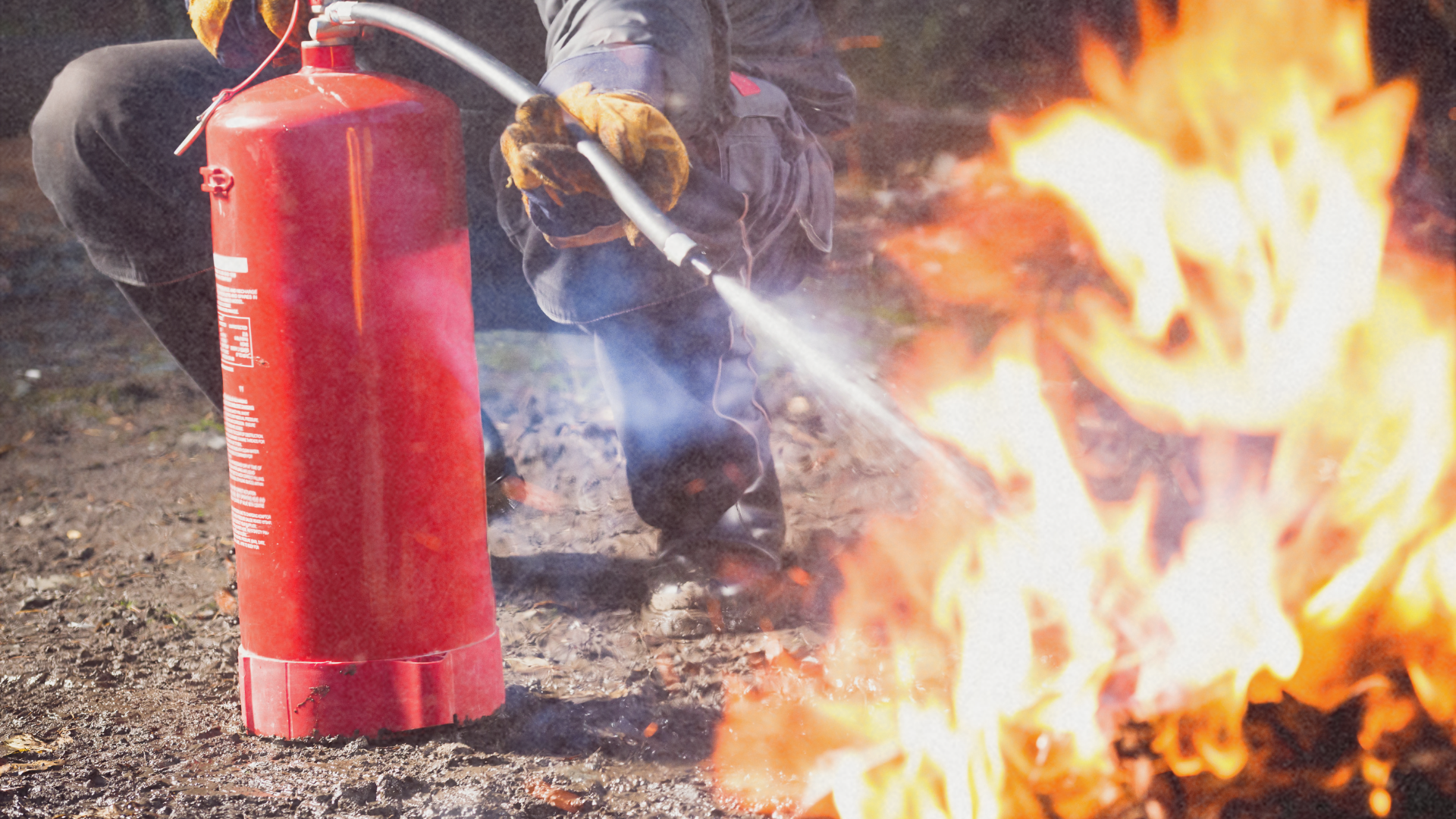The Bureau of Fire Protection (BFP) of the Philippines is a government agency whose role is to suppress and prevent the outbreak of destructive fires, enforce relevant laws, and provide or help provide emergency medical and rescue services. But the BFP faces an uphill struggle in the performance of its duties in a conflagration-prone nation such as the Philippines.
The country is saddled with aging and/or inadequately installed or constructed infrastructure, including electrical systems, which thus pose a significant fire risk. Additionally, the combination of two of the country’s defining characteristics – extremely hot summers and drenching monsoon seasons – put the country’s inadequate systems under their own particular sort of pressure year-round. Nor does the BFP get any respite during the holiday season, either. The Filipino’s addiction to fireworks, especially during the Christmas season, constitutes a further threat to life, livelihood, and property.
It is no stretch to say that consequently, the BFP has its work cut out for it. To make matters worse, since its creation, the BFP has come under scrutiny for having gained something of a reputation for corruption and inefficiency. However, much effort has also been expended over the years to bring the BFP to the level of competence and professionalism it needs in order to properly discharge its duties.
A brief history of the BFP from the legal perspective
According to the official website of BFP Region 10, then-President Ferdinand Marcos enacted Presidential Decree 765 in August 1975 which created the Integrated National Police (INP) by integrating all city and municipal police and fire departments and jails. These integrated forces were placed under the operational control of the Philippine Constabulary. The Philippine Constabulary had the operational control over said integrated forces. The INP was “made responsible for public safety, protection of lives and properties, enforcement of laws, and maintenance of peace and order” within Philippine territory. It could take necessary measures to “prevent and control fires, investigate the commission of all crimes and offenses and bring offenders to justice” to ensure public safety.
In 1990, the BFP was created and situated under the umbrella of the Department of Interior and Local Government (DILG) by virtue of Rule 111, Section 49 of Republic Act 6975, also known as the “Department of Interior and Local Government Act.” Said act mandated the BFP to perform the following functions as stated in the official website of the City of Dasmariñas:
- Be responsible for the prevention and suppression of all destructive fires on building, houses and other structures; forest; land transportation vehicles and equipment; ships and vessels docked at piers or wharves anchored in major sea ports; petroleum industry installations; plane crashes; and other similar incidents;
- Be responsible for the enforcement of the Fire Code of the Philippines (PD 1185) and other related laws;
- Shall have the power to investigate all causes of fires and if necessary, file the proper complaint with the city or provincial prosecutor who has jurisdiction over the case;
- In time of national emergency, all elements of the BFP shall, upon direction of the President, assist the AFP [Armed Forces of the Philippines] in meeting the national emergency; and
- Shall establish at least one (1) fire station with adequate personnel, firefighting facilities and equipment in every provincial capital, city, and municipality subject to standard rules and regulations as maybe promulgated by the DILG.
Such activities as Fire Prevention Month, an annual nationwide observance every March – traditionally the start of summer – administered by the BFP along with local government units, firefighting agencies, schools and other key institutions, are also legally mandated. In the case of Fire Prevention Month, by Presidential Proclamation No. 115-A signed into law by President Ferdinand Marcos in November 1966.
Legislation geared towards boosting the competencies of the BFP and its personnel has frequently been created and implemented over the years. For instance, in June 2004, Congress enacted Republic Act 9263, or the “BFP Professionalization Act of 2004,” which aimed to boost the qualification standards of appointment at the BFP.
In December 2008, the Revised Fire Code of the Philippines or Republic Act 9514 was signed into law, establishing a comprehensive and updated Fire Code for the country, thus repealing the outdated and then-30-year-old Presidential Decree 1185.
In May 2009, then-President Gloria Arroyo signed into law Republic Act 9592, or “An Act extending the five years reglementary period for complying with the minimum education qualification and appropriation eligibility in the appointment of the BFP,”according to the BFP Region 10’s official website.
Extant legislation also covers the competence of Fire Safety Practitioners. As pointed out by BFP-NCR Regional Director Chief Supt. Santiago Laguna to SecurityMatters, these practitioners are covered by the BFP Memorandum Circular No. 2009-017 in November 2009 entitled “Guidelines on the Issuance of Certificate of Competency for Fire Volunteers, Members of Fire Brigades, Fire Safety Practitioners and Organizations Dealing with Fire Safety.”
Challenges, controversies, and remedies
Despite being underpinned by a serviceable legal framework, the BFP continues to face several challenges that hinder its ability to meet its mandate and properly prevent and fight fires. As brought up in our exclusive interview with C/Supt. Laguna and Supt. Jose Embang, these run the gamut from lack of personnel, budget and equipment to corruption – all of which, of course, are interrelated. Supt. Embang is the National Focal Person for Chemical, Biological and Radiological Issues (CBRN).
The BFP makes use of its established network to augment its resources with the help of contributions from the private sector. Properly trained volunteer firefighters, who are under the command of the BFP fire ground commander during any conflagration, are of great help to the agency since they provide assistance where and when necessary. These volunteers utilize their own equipment in many cases – and doing so takes significant pressure off the bureau itself.
However, it is with regards to enhancing its own equipment stocks that the BFP has sometimes been perceived to fall short of standards. Akin to many of its fellow Philippine government agencies and arms, the BFP has not been a stranger to allegations and accusations of corruption over the years. Many of these allegations have had to do with corruption pertaining to the acquisition of new equipment – necessary in order to help keep the BFP as able as possible to meet its mandate.
In 2000, for example, a report by Gina Tabonares in the Philippine Star made reference to an allegedly anomalous bidding for fire trucks while simultaneously revealing that “… almost all aspects of the bureau’s operations – from fighting fires to office work – has some form of irregularity,” including “the purchase of fire hoses, nozzles, office supplies, and the repair of broken trucks.” She also revealed that as a consequence of said corruption, many firemen were poorly equipped and had to share key safety equipment such as fire coats, boots, helmets, and breathing apparatuses.
These and other such irregularities have been the target of many officials, who have undertaken many initiatives to attempt to counter such wrongdoing. For instance, the late former DILG secretary Jesse Robredo in 2010 ordered the BFP to immediately cease issuing a Fire and Life Safety Assessment Report (FALAR) before the issuance of a Fire Safety Inspection Certificate (FSIC) to business establishments. He claimed that the issuance of this FALAR had been the source of some corrupt practices by unscrupulous BFP personnel, according to a report by Abigail Kwok in the Philippine Daily Inquirer. He also explained that the FALAR prerequisite was not contained in the Fire Code of the Philippines, but only in a memo issued by ex-BFP Director Rogelio Asignado in 2005. Concurrently, he also ordered the investigation of reports that some BFP personnel were selling fire extinguishers and other such equipment to some of those applying for FSICs.
Despite these and other initiatives, in February 2012 fresh allegations of corruption surfaced regarding the procurement process of new firefighting equipment. As exposed by Bulatlat.com’s Ina Silverio, Bayan Muna lawmaker Teddy Casiño asked Congress to investigate what he called the “dubious termination” of a government contract for some PhP243 million worth of firefighting equipment. This, Casiño claimed, was done to favor regular BFP suppliers despite the fact that another supplier had supposedly won the bid.
In response, the BFP’s countermoves continue. Earlier in 2013, current BFP officer-in-charge Supt. Carlito Romero announced that the BFP was engaged in finding ways to “limit and restrict” the opportunity for corrupt firefighters to engage in their unscrupulous acts, while at the same time continuing to pursue modernization of its equipment and promote the prevention of fires. He made mention of a clause in the aforementioned FSIC that establishment owners sign to certify that the inspecting team did not ask for bribes or personal favors.Such moves are supported by an increasingly robust framework to combat corruption. Research revealed that many laws or programs are currently in place to combat it or eliminate it altogether, such as Republic Act 6770 (“The Ombudsman Act of 1989,” which provides for the organization of the Office of the Ombudsman), Republic Act 6713 (which establishes a code of conduct and ethical standards for public officials and employees), the Office of the Ombudsman’s Integrity Development Review, and so on. Additionally, the agency welcomes donated equipment as long as such conform to the Memorandum Circular for Donations of Equipment.
Into 2013 and beyond…
This year, and indeed in succeeding years, the BFP continues to aim to follow its mandate and pursue measures to boost its capacity to do so, while also facing off against corruption and irregularities.
For instance, the agency has just received a shipment of 38 modern fire trucks, half of a total of 76 units, acquired via a soft loan package worth approximately PhP1.1 billion from the government of Austria.
These trucks are to see distribution in Manila and in selected cities in various provinces in order to improve the receiving fire stations’ ability to deal with fires. Current DILG Secretary Manuel Roxas said that these Austrian-made fire trucks were designed for use in highly urbanized environments and that these trucks would thus significantly boost the firefighting capacity of the BFP as a whole.
The BFP is also to continue to broaden and deepen the expertise of its firefighters. The BFP’s Special Rescue Unit is composed of firefighters who have undergone specialized training to enable them to conduct rescue operations if need be, and thus to allow them to mount a proper response to other catastrophes and/or emergencies instead of only fires per se.
Additionally, the BFP is to continue to build its competencies, especially as regards new threats – those that may not be widely recognized as falling under its ambit. Not many may know, for instance, that there is a unit in the BFP that helps address its critical need to keep its WMD (weapons of mass destruction)/HAZMAT (hazardous materials) capabilities sharp – hazardous materials and hazardous operations management capabilities, which include planning and preparedness, prevention, response, cleanup and recovery in the event of spillage release of hazardous materials or waste. Some BFP firefighters have the skills to manage such delicate endeavors, backed up by suitable safety equipment and protective gear. The BFP is also an agency member of the Anti-Terrorism Council and the Philippine Center on Transnational Crime, which are concerned with the development of strategies to help respond to WMD threats.






2 responses to “The Bureau of Fire Protection: Moving Towards True Fire Readiness and Prevention”
Just want to know if small restaurant operators really require to install an automatic suppression system in the kitchen?
(It’s not just about your “restaurant” and its “kitchen”. Rather it’s about what sort of building occupancy your restaurant occupies; where are your restaurants located?)
From the 2008 Fire Code’s Implementing Rules and Regulations:
Section 10.2.8.8. PROTECTION
E. Extinguishing Requirement
1. The following assembly occupancies shall be protected throughout by
an approved, supervised automatic sprinkler system:
a. bars with live entertainment;
b. dance halls;
c. discotheques; and
d. assembly occupancies with festival seating.
2. Buildings containing assembly occupancies with occupant loads of more than 300 shall be protected by an approved, supervised automatic sprinkler system:
a. throughout the storey containing the assembly occupancy;
b. throughout all storeys below the storey containing the assembly occupancy;
c. in case of an assembly occupancy located below the level of exit discharge, throughout all storeys intervening between that storey and the level of exit discharge, including the level of exit discharge.
(But yes, you do, if it’s an enclosed kitchen, which we’ll assume you have range hoods to evacuate the fumes, mists and vapors. If no hood, and the kitchens are still enclosed, you’ve got more problems than not having automatic suppression.)
SECTION 10.2.8.9 BUILDING SERVICE EQUIPMENT
C. Special Provisions for Food Service Establishments
1. All devices in connection with the preparation of food shall be installed and operated to avoid hazard to the safety of occupants and shall be installed and maintained in accordance with good engineering practice.
2. Cooking equipment shall be protected by automatic kitchen hood fire suppression in accordance with NFPA 96, Standard for Ventilation Control and Fire Protection of Commercial Cooking Operations.
(NFPA means United States National Fire Protection Association.)